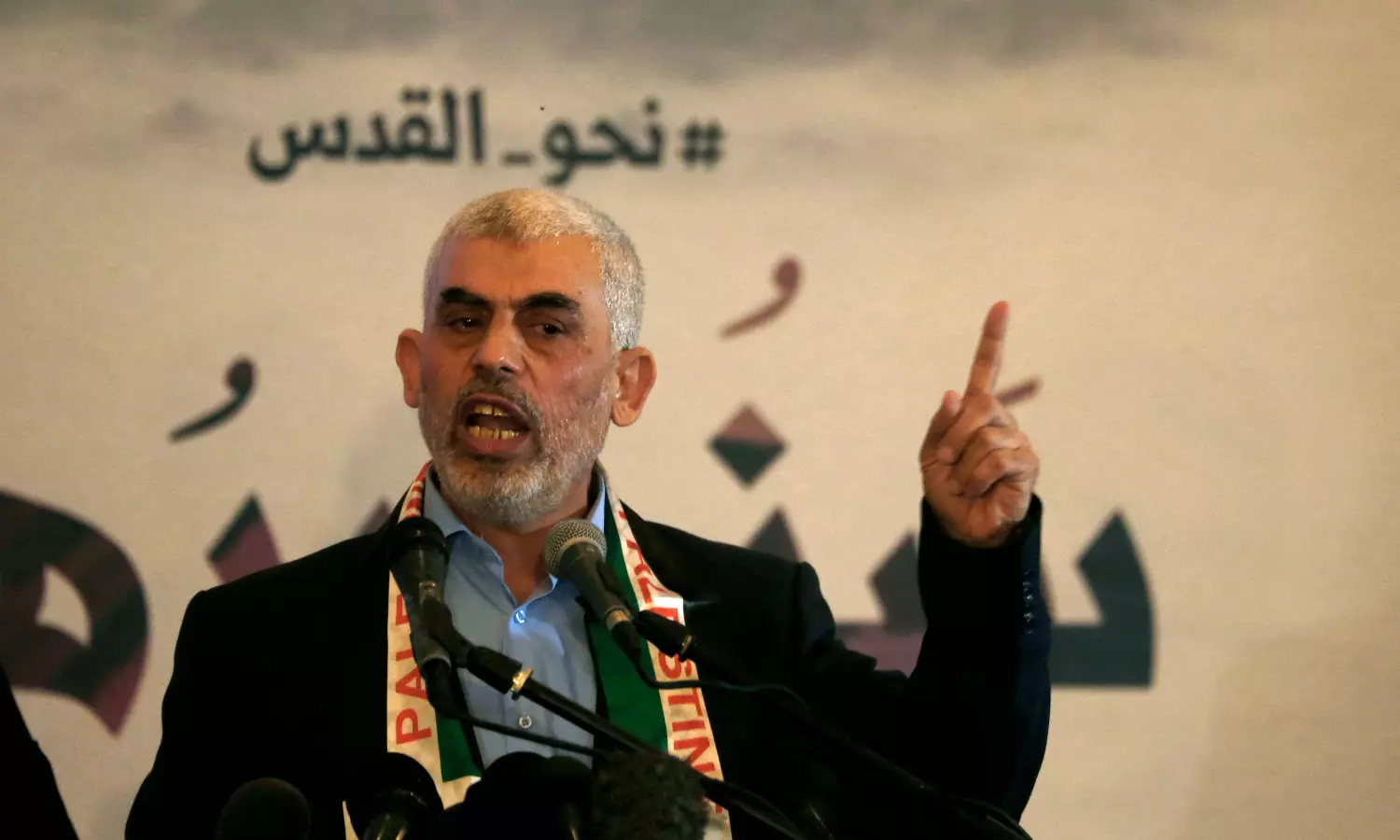Saeed Naqvi | Sinwar’s death is temporary relief for Israelis, will trigger resistance
Hassan Nasrallah’s death in Beirut similarly fuelled resistance in south Lebanon. Was the IDF able to break the Hezbollah resistance on the ground?;

The celebrations in Israel at the elimination of Yahya Sinwar, the Hamas leader who masterminded the October 7, 2023 attack, is an expression of relief by some Israelis. Does Sinwar’s death mean victory for Israel? A hundred or so hostages are still in Hamas hands. Hamas’ recruitment drive is in full swing for “the long war”. Does Israel have the stamina for that war?
Bombing and destroying missions are easy as replenishments for such warfare are readily available with the US “military industrial complex”. The real need is foot soldiers and military gear for a ground invasion. These are in short supply as the US is averse to putting boots on the ground.
The lesson Israel and its American patrons must learn is that while aerial attacks are good for destroying nations, it is useless in fighting nationalism, in Gaza or in Lebanon.
Hassan Nasrallah’s death in Beirut similarly fuelled resistance in south Lebanon. Was the IDF able to break the Hezbollah resistance on the ground? The Lebanese say Israel is having to ferry more dead and wounded soldiers than they bargained for.
It just so happens that the terrain Israeli troops must break through to enter Lebanon is contiguous with the 120-km Blue Line which the UN Interim Force (UNIFIL) monitors.
Let me share with you my Blue Line experience when in 2002 India’s Maj. Gen. Lalit Mohan Tiwari was the force commander. An additional advantage to me as an Indian journalist and my camera crew was that a 900-strong Indian battalion with its own chain of command operated under UNIFIL.
The UNIFIL headquarters was in Naqoura, in the 1,060-sq km area the force commanded between the Blue Line, a sort of border between Israel and Lebanon. Gen. Tiwari’s residence was in Haifa, Israel’s third-largest city. He commuted daily between Naqoura and Haifa.
Even though the headquarters was in south Lebanon, the force commander’s base in Haifa may have given the Israelis a sense of control. The situation today is different. Until recently, the force commander was Irish, a nation critical of the genocide in Gaza.
The assumption that the entire UNIFIL area is Shia is wrong. While much of it is Shia and possibly Hezbollah, there are several villages supervised by Christian mayors. The Indian battalion was in a village whose mayor gave us a lecture one evening on how his village was known as the place where the world’s best arrack was brewed. A Shia Muslim village wouldn’t boast of its arrack. It was a Christian village. The 40 countries represented in UNIFIL manned the 50 posts scattered around. The fierce fighting is obviously causing the IDF to look for “soft” points through which to make its penetration. Today, UNIFIL can’t be wished away because Israel finds it inconvenient. The sole superpower moment is over.
Gen. Tiwari had a plausible manner with Israelis as well as the Hezbollah side. He even advanced my case to meet Hezbollah supremo Hassan Nasrallah. The interview didn’t take place but Gen. Tiwari did introduce me to a Hezbollah official who said “let me try”.
What happened was a cloak-and-dagger sequence which began at a nondescript apartment block at Dahieh, much in the news recently. A smart young man with a trimmed beard led me into yet another large car. He apologised that our camera team was not being allowed to accompany me. I was finally led into a basement divided by a large curtain and invited to sit in one of two sofas arranged quite typically for an interview.
Finally, a kindly looking man, grey beard, a brown gown and a white turban seated himself opposite me. It was not Nasrallah but his long-time deputy, Naeem Qasim.
The history of the region had begun to change dramatically after the Shah of Iran, an ally of the West, fell in 1979. The consolidation of the ayatollahs in Tehran was only one of the reasons for Israeli defence minister Ariel Sharon to march into Lebanon in 1982 which, in turn, spurred Hezbollah’s growth.
This was the backdrop against which Syria and Iran were able to work together during the dramatic 17 days in 1985 when militants (no one knew who) forced a TWA flight from Athens to Rome to land in Beirut. To negotiate the release of 36 Western hostages, Speaker of Iran’s Majlis Hashemi Rafsanjani and Syria’s vice-president Abdul Halim Khaddam pooled in their skills with the most influential Shia leader in Lebanon, Nabi Berri, Speaker of the Lebanese Parliament. He played a key role in arranging for the release of the hostages.
Berri’s parliamentary politics was overtaken by Nasrallah’s military response to Israel’s aggression internally from within Lebanon and frequent attacks on Palestinian positions in Lebanon, Syria, Gaza and the West Bank -- all gave impetus to the resistance groups. By 2020, before his assassination by the US outside Baghdad airport, Iranian commander Qasim Suleimani had already created firm linkages between various resistance groups. Those linkages are still evident today.
Quite remarkably, the Israeli occupation of Lebanon and the US occupation of Iraq caused the world to wake up to a new reality -- Shias were an overwhelming majority in Iraq and the largest block in Lebanon. Houthis of Yemen are a variant of the mainstream Shias are the Alawis, the most powerful group in Syria.
A great irony lies at the heart of these Shia groups pooling in their resources to end Israeli genocide in Gaza: Hamas in Gaza is true-blue Sunni Akhwan-ul-Muslimeen, or the Muslim Brotherhood, a detail on which the Western media buries its head in the sand.

